Sharlyn J. Lauby's Blog, page 69
April 15, 2021
Manage to Change – Part 6, Self Management Series
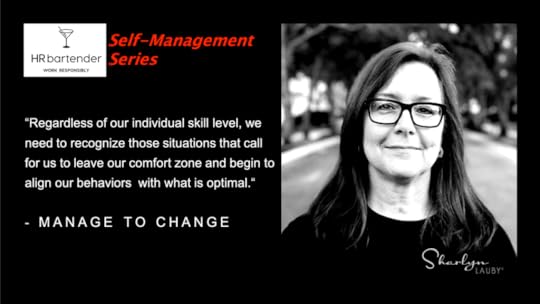
Estimated reading time: 3 minutes
Our last post in this series about the qualities of self-management for remote workers deals with change. I’m not talking about change management because that’s really an organizational process. It’s important, but it’s a process.
The idea behind “manage to change” lies in the ability of each individual to change as necessary. And that couldn’t be more relevant than right now. But, just in case you missed one, here’s a recap of the five qualities we’ve discussed so far:
#3 – Be a Part of the Solution
#4 – Handling Personality Conflicts
On some level, all of them deal with our ability to change. Whether it’s knowing ourselves, understanding others or handling difficult situations, there is a change component. The concept of “manage to change” focuses on our ability to effectively identify and make a change when needed. It’s about knowing ourselves and our circumstances well enough to know when a change is called for and what kind of change needs to be made. Here are two examples:
It’s only natural to rely on our strengths. And our tendency might be when the going gets tough, to use our strengths because…well, they are our strengths. However, there are times when relying upon those strengths too much can turn those positive and productive behaviors into negative and self-defeating ones.Let’s say a person is known for their ability to lead a group or project. One of their strengths is getting people and responsibilities organized, then helping the group maintain productivity. However, if the person always has to be in charge and is unable to participate without being in a leadership role, then their positive behavior becomes unproductive.
The way we can manage to change in the situation is by being cognizant of our strengths and aware of situations when we might be overusing them. This will prevent us from using our preferred behaviors to excess.
The second example is when we use our strengths at the wrong time. A person who uses logical, systemic, analytical behavior is a great person to have on the team. But if the situation calls for listening to people and taking into account their feelings and emotions, then it might be considered inappropriate and insensitive to use logic and systemic reasoning at that time. In this instance, changing the approach to a more empathetic one would be more effective even though it may not be a preferred strength.Regardless of our individual skill level, we need to recognize those situations that call for us to leave our comfort zone and begin to align our behaviors with what is optimal for the situation.
Whether we work in an office or remotely, today’s workplaces are becoming more social which, in turn, means they are becoming more personal. If we want to solve the business challenges of the future, the first step is being able to self-manage. The more we can manage to change, the greater our personal and professional potential.
The post Manage to Change – Part 6, Self Management Series appeared first on hr bartender.






April 13, 2021
UKG Spring eSymposium: A FREE Learning Opportunity for #HR and #Payroll Pros

Estimated reading time: 6 minutes
(Editor’s Note: Today’s article is brought to you by our friends at UKG – Ultimate Kronos Group . Formed by two leaders in HR solutions, UKG combines the strength and innovation of Ultimate Software and Kronos. They are committed to inspiring workforces, learning, and helping pave the way for their people, customers, and industry . Enjoy the article!)
I belong to a few HR related groups on Facebook and one of the topics that I’m seeing show up more frequently is professional development. Specifically, how can certified HR professionals find and attend quality programs (and get recertification credit). Well, I’m here to share with you a program that will do just that.
I know HR pros are focused on a lot of things right now. Not only all of the usual responsibilities, but we are working with the management team on a post-pandemic strategy. There are days when we can’t possibly think about taking time off to attend a professional development program. But we just have to.
It’s time to take some of our own advice. If an employee or manager came to us about not having time for learning and professional development, we’d tell them that “developing our knowledge and skills makes us better at our jobs”. And it’s true. So, check out this great opportunity.
3 Benefits to Attending the UKG Spring eSymposiumThe UKG Spring eSymposium will be held on Wednesday, May 5, 2021 from 10a to 4p Eastern. UKG has been offering these eSymposiums for a few years and one of the things I love about the event is the flexible format. I’ll give you a sneak peek into the program in just a moment, but the event is designed in a way that allows you to follow one track or switch between tracks, based on your interests. In addition to its flexibility, the event has a few other benefits that makes it very attractive for HR and payroll professionals right now.
BENEFIT #1 – Recertification credits. As I mentioned at the beginning of this article, recertification credits are important. Especially if budgets are tight (and going to get tighter). The eSymposium is FREE and all of the learning sessions have been pre-approved by the Society for Human Resource Management (SHRM) and the Human Resources Certification Institute (HRCI). In addition, many have been approved by the American Payroll Association (APA). And for my Canadian friends, this event is also pre-approved by the Human Resources Professionals Association (HRPA) and The Canadian Payroll Association (CPA) recertification credits. UKG will be providing a certificate of participation for your files.
BENEFIT #2 – Quality content. Another aspect of this event I really like is that it brings together payroll and HR. I’ve been responsible for both a few times in my career, and this is one of the few events that has topics which are relevant to both. Since the event is free, your company can have multiple people sign up, listen to the content, and then maybe set up a virtual meeting to discuss the sessions. It’s a great way for HR and payroll to learn from each other.
BENEFIT #3 – Recordings. If you’re not able to attend the live sessions on May 5, no worries. Every session is recorded for registrants, so you’ll be able to download all of the session materials. Personally, there are times when I actually prefer listening to the recordings. I can schedule my learning over time. It’s also really great when there are two sessions that I want to hear and they’re both being presented at the same time. With recordings, I don’t have to worry about missing out.
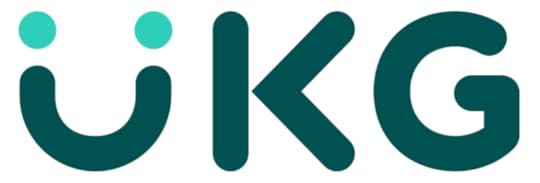
Now that we’ve talked about the benefits, let’s talk agenda. The eSymposium is divided into four tracks to Reimagine: People Processes, How We Work, A Workplace of Inclusivity, and The Future. While I would love to list all of the programs here, let me share just a few that caught my attention.
Compliance in the Time of COVID – Since the onset of the pandemic, employers have had to address a myriad of taxation issues, state and local safety regulations, and COVID-specific leave laws. In this session, the UKG compliance team will outline recent COVID legislation and talk about some key trends facing employers, including remote work.
Trust in the Workplace: Boosting Employee Engagement – Trust impacts everything in an organization – productivity, workplace culture, employee retention, customers, and the bottom-line. So, what does it take to create a healthy workplace with a positive culture and trusting environment? Join Dr. Chris Mullen, executive director of The Workforce Institute, and Erika Sandoval, from UKG’s HCM Advisory Group, as they share the latest research on workplace trust.
The Science Behind DEI&B – The world is at an inflexion point. Human rights abuses, the rise of nationalism, the emergence of hate, chronic disparities based on race, age, sex, religion, and sexual orientation are occurring across the globe. The way we live and the way we work is unsustainable. Dr. Jarik Conrad, vice president of human insights at UKG, will lead the discussion on how corporate social responsibility (CSR) must take on a new meaning if we want society to be fairer, more just, and more human.
Building an Intentional Culture: What Merging During a Pandemic Taught Us About HR and Ourselves – I hope you’ll find time to listen to this fireside chat with me and Dave Almeda, UKG’s chief people officer. Dave promises to share a firsthand account behind the merger of Kronos and Ultimate Software, two organizations that have ranked on the Fortune 100 Best Companies to Work For lists for years. We’re going to talk about what it’s like to merge two companies – in the middle of a pandemic – and create an intentional culture.
You can check out all the great sessions and save your spot here.
Find Time to Invest in Your HR Learning & DevelopmentI hope you find this agenda as interesting as I do. This one-day eSymposium is designed to bring HR and payroll professionals education on the topics we face every day and could potentially face in the future. It has the three ingredients many of us look for in professional development opportunities: 1) high quality content, 2) no-cost to attend, and 3) pre-approved for recertification. We all know this doesn’t happen very often. So, find some time to focus on your professional development. Sign up for the UKG Spring eSymposium. Here are the registration details:
Wednesday, May 5, 2021
10 a.m. to 4 p.m. Eastern Time
I look forward to seeing you there!

The post UKG Spring eSymposium: A FREE Learning Opportunity for #HR and #Payroll Pros appeared first on hr bartender.






April 11, 2021
Leaders and Managers: Here are 7 Things Employees Expect of You

Estimated reading time: 6 minutes
There’s an old saying that employees don’t leave organizations, they leave bad managers. On some level, that still holds true. An employee’s relationship with their manager can make or break their career experience.
But that means managers and leaders in the organization need to be equipped to deliver a good employee experience. Here are seven things that every manager and leader should be able to do.
Acknowledge your biasesTeach your employees how to manage upRun a good meetingCreate actionable goalsCommunicate effectively in writingCoach an employee’s performanceBe a good followerIt’s important to know the limits of your skill level in each of these managerial competencies. To do that effectively, we need to examine a little more about each one.
Acknowledge your biases.
First things first. Managers and leaders need to be fair. One of the most challenging aspects in recruiting and performance management is overcoming biases. A bias is defined as “a prejudice in favor of or against someone or something”. While all biases are not negative, biases can have a negative impact on employees and the team.
Candidates expect to be evaluated fairly during the interview process. Employees expect their performance reviews to be fair and free of biases. Many different kinds of bias exist. As managers become more aware of their biases, hopefully they will consciously check their thoughts and decisions to ensure they are equitable. This benefits employees, the organization, and the bottom-line.
Teach your employees how to manage up.
Managers and leaders need to know how to get the best performance out of their staff. But employees need to know how to bring out the best in their manager too. Which is why regardless of your position, being able to manage up is necessary. We’re not talking about manipulating the boss. This is about developing a good working relationship. It’s a win for everyone involved.
A really good boss knows enough about themselves to share information about their working style. I love the idea of managers and employees putting together a personal user manual that helps the other person learn more about working styles. In addition, the activity of putting something like this together could help everyone learn more about their own working style too.
Run a good meeting.
Whether you work in an office or remotely, chances are good that you attend a lot of meetings – many of them are routine like staff meetings or safety meetings, etc. Unfortunately, because we do attend a lot of meetings, sometimes the phrase “let’s meet about this” can sound so casual that it might send the message that meetings are easy.
Truth be told, meetings are hard work. At least when they’re done right. In my personal experience, no one minds a productive meeting. They do get frustrated if a meeting is wasting time. The real key to a successful meeting is planning. If you really take the time to plan and prepare, it has a definite impact on attendee participation and the outcome of the meeting.
Create actionable goals.
Whenever I’m challenged to create a goal or action plan, I try to work it into a SMART format (specific, measurable, actionable, responsible, and time-bound). I’ve mentioned before how much I love SMART plans and find it to be a very flexible way to set goals and hold myself accountable.
Over the years, I’ve found the SMART acronym a great way for creating meeting minutes. I can’t think of a better way to document meeting discussions. Using the SMART format for meeting minutes also helps guide the conversation toward key discussions like “We have a great idea here…now who’s going to take ownership for getting it done?” And “Thanks Jose for leading this task, when can we expect it to be completed?”
Communicate effectively in writing.
The average office worker receives 120 emails each day. Even if that number is inflated, I’d like to think no one will argue that people are subject to reading and writing a lot of email. Obviously, email is not a dying and/or dead method of our business communications. Maybe someday it will be, but we’re not there yet.
Given how much email we generate, it’s amazing to me that we don’t have formal written rules on what’s considered to be acceptable or unacceptable. We have structure around the way we draft resumes, write business letters, and use social media. Email? Not so much. And let’s face it, nothing frustrates people more than when others break what are considered the accepted (but not written) rules of email.
Coach an employee’s performance.
The purpose of performance coaching conversations isn’t to punish the employee. It’s to change their performance behaviors. That’s why you don’t want to delay a performance conversation because the employee will think their behavior is acceptable. The longer you wait, the harder the conversation.
None of us likes to have a negative performance conversation. I always try to remember the purpose – it’s to help an employee change their behavior. If the conversation stays focused on helping the employee be successful, then hopefully it never escalates to disciplinary action. And the employee understands that the manager and the company are having this conversation because they want the employee to be successful.
Be a good follower.
Servant leadership was started in the 1970’s by Robert Greenleaf, director of management research at AT&T. Greenleaf’s job was to study how the best leaders emerged in organizations. During the same time, Greenleaf was personally troubled by the student unrest on college and university campuses. So, Greenleaf decided the best way to understand the youth movement was to read a novel that was very popular with the young adults of that time. The novel was “Journey to the East” by Hermann Hesse.
SPOILER ALERT: “Journey to the East” is about a group of people traveling to a new land. Accompanying the group is their servant, Leo, who sings songs of encouragement and takes care of their stuff. During the trip, Leo disappears. The group struggles to stay together and eventually disbands. Several years later, it’s discovered that Leo – the group’s servant – was really their leader.
Inspired by Leo’s character, Greenleaf realizes the key to leadership lies in “serving” (aka focusing on the people you manage) and writes what’s considered to be his most famous essay, “The Servant as Leader”, which outlines ten basic competencies associated with servant leadership. It’s a reminder that’s there is no silver bullet to being a good leader. But if there was, maybe first serving the people around you is it.
It’s takes regular work to be good managers and leadersThis is by no means a complete list. In addition, there are activities that managers and leaders need to do that are related to getting stuff done around the organization. Examples are schedules, budgets, vendor management, and more. Today’s list is focused more on people interactions that managers and leaders do every day.
No one ever said that being a manager and leader is easy. If it was, we would all have an index card in our pocket or sign on the wall that simply said “Do this. That’s it.” This list serves as a reminder of the things we need to help us start our management and leadership journey. Will there be moments when we let our guard down and fall into bad habits? Yes. This list will help us get back on track again.
Image captured by Sharlyn Lauby while exploring the streets of Las Vegas, NV
The post Leaders and Managers: Here are 7 Things Employees Expect of You appeared first on hr bartender.






April 8, 2021
Organizations Need To Support Their Employees Reentry Into the Workplace

Estimated reading time: 4 minutes
I ran across an article in my Morning Brew newsletter titled, “Nearly 50% of people are anxious about getting back to normal, pre-pandemic life – here’s how to cope”. I totally get it.
Over the past few weeks, Mr. Bartender and I have started talking about what we’re calling “re-entry”. You know, the plan to re-enter regular life as in dining in a restaurant, taking a vacation, getting a manicure, going to a store, etc. I’m sure we’re not the only people who are planning activities once they get vaccinated.
BTW – just in case you’re interested, our plan isn’t to flip a switch and just start doing everything. With me being an over planner and Mr. Bartender’s fondness for spreadsheets, we’ve developed something that resembles a Gantt chart for re-entry. We’re planning small activities and as we get more comfortable, we’ll do more. I’m confident that some of you are laughing as you read this, and I’m totally cool with that. I’m laughing as I’m typing it. But it works for us and that’s what matters.
But it occurred to me as we’re having these conversations about our re-entry, that employees are doing the same thing. They’re thinking about their re-entry not only on a personal level but a professional one. I’ve talked with people who haven’t seen their workplace in a year. That’s not a typo. They haven’t seen their office for one year. It made me realize that organizations need to think about the re-entry plan for their employees. Here are a few things to consider.
Give employees plenty of notice. It’s tempting to write an announcement that everyone should start returning to the office once they get their vaccine or on a particular date. Think about timing. A staggered approach could be beneficial to the operation and helpful to employees. Give employees plenty of notice so they can make arrangements to return to the workplace (and not be at home all day).
Consider relaxing the dress code. I’ve somewhat jokingly said that I’ve been trying to figure out a way to incorporate graphic t-shirts and sneakers into my workplace business attire. But it’s true. Many of us haven’t worn business attire in a long time. If you’re accustomed to a more formal dress code, maybe ease into it. Lot of organizations let employees wear casual attire over the summer months. Timing could be good for that.
Let employees reconnect with their workspace. Like I mentioned, some employees haven’t seen their office for months. Organizations should give employees at least a day, maybe two, to go through their office space. Open drawers, find things, and possibly even throw some stuff away. This could be a great opportunity for employees to start their re-entry with a nice clean, organized office.
Provide opportunities to reconnect with colleagues. Yes, employees have seen each other on Zoom calls. It’s not the same in the workplace. Consider offering networking time for employees to just catch up. Give managers a few icebreakers so they can include reconnecting time to the start of meetings. Small talk is important to relationship building and employees will need it as part of their re-entry.
Be prepared to slow the pace of the workday. The items I’ve mentioned above are necessary, but I won’t lie – they will slow productivity in the short term. Think of it as an investment in long-term productivity. Giving employees an opportunity to reconnect with their workplace will successfully start their re-entry. And for organizations that are trying to get everyone back in the office working at pre-pandemic levels – this helps the goal.
I’m sure some of you might be saying, “These seem like very small things.” And they are. Organizations that take the time to do the small stuff during employee re-entry are the ones that will see long-term success. Don’t rush this step. The result of a successful employee re-entry program is better organizational economic recovery.
Image captured by Sharlyn Lauby at the 34th Street Graffiti Wall in Gainesville, FL
The post Organizations Need To Support Their Employees Reentry Into the Workplace appeared first on hr bartender.






April 6, 2021
Financial Wellbeing: Employees Want to Decide How They Get Their Pay

Estimated reading time: 5 minutes
(Editor’s Note: Today’s post is brought to you by our friends at Wisely® by ADP , a suite of cost-effective pay solutions that helps organizations move to 100% paperless pay. The myWisely app been recognized as the App of the Year at the HR Technology Conference . Congrats! Enjoy the article.)
I’d like to think that we agree, Millennials currently make up the majority of today’s workforce. And that number is expected to grow as more Boomers plan their exit strategy. Today’s article isn’t about “managing the generations”. Rather, it’s about something that every generation can agree on – money. Employees want to be paid on time. They want their pay to be correct. And they want control over how they are paid.
What we’re learning is that generations might differ on the format that they receive their pay. In the ADP study “Generational Trends Shaping the Future of Worker Pay”, 47% of younger workers said that they wanted their paycheck to be in the form of a paycard because they prefer not to have a bank account. I think this is an important trend that HR and payroll departments need to acknowledge. Not everyone uses a banking institution. There are lots of reasons why and we don’t really need to get into those in this article. The point is employees need to receive their pay and they deserve to be paid the way they want.
We talk all the time about creating a positive working experience for employees. Because we know that a positive working experience translates into increased employee engagement, improved productivity, and ultimately a better bottom-line. Part of that positive working experience – a big part of it – is letting people have control over their pay. The good news is that with the right partner, employers can provide employees with what they’re looking for.
Wisely Lets Employees Get Paid the Way They WantWisely by ADP is a suite of digital pay tools that allow employees to receive their pay the way that works best for them. The suite has three components:
Wisely Pay, an opt-in paycard offered through the employer,Wisely Direct, an opt-in reloadable card offered by ADP directly to consumers, andmyWisely, a mobile app which comes with both Wisely Pay and Wisely Direct.I recently had the opportunity to learn more about Wisely. Here’s a high-level overview of how it works, and the benefits that employees receive from using it.
Employees are able to keep more of their pay. I’d like to believe that we all agree that the fewer number of fees we have to pay, the better. With Wisely, there are no minimum balance requirements, no sign-up fees, or monthly or hidden fees. Employees have access to tens of thousands of select ATMs nationwide for fee-free cash access.Employees can track their income and expenses online. With Wisely, employees may be able to receive their pay up to two days early. They can also look at spending trends by category like food, dining, shopping, etc. Being able to view income and expenses allows employees to create budgets, monitor spending habits, and make financial decisions with good information.Employees can start saving. We’ve all seen the articles that the majority of Americans do not have $400 to cover an emergency expense. In addition to the savings tools, Wisely offers cashback rewards on both eGift cards and for qualifying purchases at select retailers. The cashback is placed in a “special savings envelope”. Employees can use their savings to build an emergency fund. Or maybe create a fund to save for a special purchase.Employees can shop and pay bills with ease. With Wisely, employees can enjoy the benefits of the digital economy by shopping and paying bills online, instore, in-app, or by phone where Visa and Mastercard are accepted. Cardholders can add their Wisely card to their mobile wallet to pay with a single touch anywhere Apple Pay, Samsung Pay, or Google Pay are accepted.It’s also important to mention that Wisely and the myWisely app have safety and security features in place. A cardholder’s funds are insured by the Federal Deposit Insurance Corporation (aka the FDIC). There are geofencing protections in place to reduce fraud, and a card lock feature via the app. Also, cards are equipped with an EMV chip for added protection. (Side note: EMV stands for Europay, Mastercard, and Visa, the founders of the chip.)
Financial Wellbeing is Linked to Employee WellbeingAccording to the ADP study “Employee Financial Wellness Programs: Employer Guide”, more than 85% of both employees and employers agree that financial wellbeing is important to overall wellbeing. In the same study, 79% of employees say that they want to work for an employer that cares about their financial wellbeing.
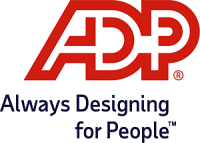
Part of financial wellbeing is allowing employees to have control over their paycheck. Organizations can do that by allowing employees to get paid the way they want. And give them tools to manage their pay. It’s a win for the employee and the organization.
The post Financial Wellbeing: Employees Want to Decide How They Get Their Pay appeared first on hr bartender.






April 4, 2021
5 Books Every HR Professional Should Own – Ask #HR Bartender
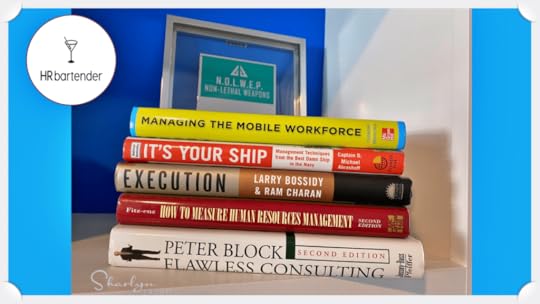
Estimated reading time: 3 minutes
I think today’s reader question is terrific. As much as I like to read, I have to admit that I haven’t put a book list together in quite some time.
Hello Sharlyn. I read an article called “How to Get an Entry-Level Job in HR” that had a few quotes from you. I’m switching careers to HR and looking to go to back to school in the fall. In the meantime, I’m trying to find a good place to start educating myself. I want to begin reading books about HR but there is so much out there which makes it a little daunting on where to start. I was wondering if you had any recommendations.
– Ask HR Bartender
Whether you’re just starting in HR or you’ve been in the field for a few years, having a good resource library is important. So here are five books that I refer to on a regular basis.
“How to Measure Human Resource Management” by Jac Fitz-enz is my absolute go-to book for understanding metrics and measurement. I don’t know that it’s a book to read cover-to-cover. I like using it more as a reference guide and reading sections as I need them. I’ve found the book useful in selling ideas to senior leadership and later being able to report on the effectiveness of programs.
“Flawless Consulting: A Guide to Getting Your Experience Used” by Peter Block is a book about creating value. I discovered this book when I was in an internal HR role and realized the value of using a consulting approach with peers, teams, and senior management. I continue to use it in my role as an external consultant.
“Execution: The Discipline of Getting Things Done” by Larry Bossidy and Ram Charan is great for helping individuals and organizations turn ideas into action. As a HR professional, we are often tasked with helping managers, departments, and the whole company turn their goals and strategies into actionable plans. I also feel the book can be helpful to getting individuals and organizations “unstuck” in their plans.
“It’s Your Ship: Management Techniques from the Best Damn Ship in the Navy” by Captain D. Michael Abrashoff is a good reminder that not everything will go as planned. There will be lots of moments when things are wrong, and we have to fix them. Abrashoff’s book is the true story of how he turned the USS Benfold from the worst to the best ship in the Navy.
“Managing the Mobile Workforce: Leading, Building, and Sustaining Virtual Teams” by David Clemons and Michael Kroth Ph.D. is a book that came out well before it’s time. As organizations explore hybrid work, being able to understand the virtual workforce and how to create policies/procedures/systems that will support virtual work is imperative.
There are so many other great books out there but hopefully this is a good start to a HR professional’s library. And, of course, if you want to check out my books, I think they’re pretty good too. If you have some books that you recommend, put them in the comments. We can turn this article into a resource for others.
The post 5 Books Every HR Professional Should Own – Ask #HR Bartender appeared first on hr bartender.






April 1, 2021
5 Business Lessons Learned Making Sourdough Starter

I have a confession to make. Over the past year, Mr. Bartender and I have been sucked into more than one pandemic distraction. We made Dalgona coffee to meh results. We tried growing our own green onions. But the one pandemic activity that we had some success with was making sourdough starter.
We spent the better part of last year making the starter, feeding the starter, and at the end of the year, we decided to end our sourdough starter project. But along the way, we learned some lessons that apply to our business life.
There’s more than one path to success. You can make sourdough starter many different ways. Some recipes use wheat flour. We started ours with raisins and rye flour. Because starter can be made with different ingredients, it will have different results. No different than in business. We hear what one company is doing and say to ourselves, “Hey! We could do something like that in our organization.” We don’t have to mirror what others are doing to have a good outcome.
Small incremental actions over time can yield huge results. To create what is called the “mother” sourdough starter, you have to “feed” the starter for about a month. The feeding process is where you take out some of the mixture and then add some flour. It’s a relatively long-term commitment to feed the starter. But as you do it, the starter takes shape and starts to have that wonderful sourdough smell. Same with business projects, we start a project, and it doesn’t look like we’re getting very far and then all of a sudden, pieces start coming together. We can’t dismiss the small steps.
Don’t be afraid to revisit “discarded” ideas. I mentioned in the above paragraph how when we fed the starter, we would take out some of the mixture. That’s called discard. Some people throw discard away. I made it my mission to find uses for the discard. There are zillions of recipes that use sourdough discard. Our favorites included peanut butter cookies and waffles. From a business perspective, we shouldn’t be hesitant to revisit an idea that we might have initially “discarded”. It’s possible that the work environment has changed over time and the idea that wouldn’t work six months ago is absolutely perfect now.
Know when you are overwhelmed. And address it. At some point in the sourdough project, we started getting overwhelmed trying to find uses for all of the discard. The good news was that we discovered you could freeze discard (and we have!). But we also realized that we were so focused on the sourdough that we weren’t making other foods that we enjoy. That’s when we decided to set a date to end the project. There are lots of great things we can do in business, but we can’t do them to the exclusion of other activities. Creating balance is important.
Enjoy your successes! When we decided to end our sourdough project, we wanted to do one thing: make a loaf of sourdough bread. We actually ended up making two: a sourdough olive loaf and a sourdough cinnamon raisin swirl bread. Both were fantastic! In fact, we were almost tempted to keep the sourdough because they turned out awesome. Instead, we celebrated our success and put some away in the freezer. It’s okay to end a project so you can move on to other activities. Do the debrief and celebrate what you’ve learned.
Would we make sourdough starter again? Maybe. We had fun with it, made some delicious foods, and learned some lessons along the way, especially when it comes to business projects. It’s okay to revisit old ideas, stop doing things because they don’t make sense anymore, and still celebrate the success.
The post 5 Business Lessons Learned Making Sourdough Starter appeared first on hr bartender.






March 30, 2021
Talent Intelligence Should Be Part of Your Workforce Planning
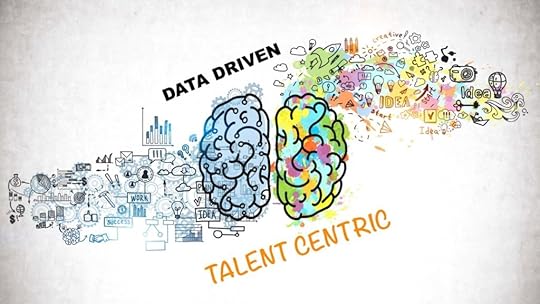
Estimated reading time: 6 minutes
(Editor’s Note: Today’s article is brought to you by Censia , whose talent intelligence platform helps organizations find the talent most likely to succeed while simultaneously reducing bias. Check out this video of Censia CEO Joanna Riley talking about “ The New Battle Ground: Employee Experience Fueling HR Innovation ”. Enjoy the read!)
Workforce planning is one of the biggest challenges facing businesses today. It’s the process of determining the knowledge, skills, and abilities (KSAs) that the organization needs to be successful and then putting a plan together to hire individuals with those skills at the right time.
A key step in workforce planning is conducting an environmental scan or PESTLE analysis. PESTLE is an acronym that stands for political, economic, social, technological, legal, and environmental. An environmental scan covers the same things and often includes competitive set analysis. The point of these scans/analyses is to understand what’s happening in the business world around us, so we can put together a realistic workforce plan. That leads us to the topic of talent intelligence.
What is Talent Intelligence?Most of us have heard of business intelligence. It’s the use of technology to gather and organize large swathes of data, which can predict and recommend future business outcomes. One of the reasons that business intelligence data is so valuable is because it’s organized, easily classified, and relatively standardized. When we refer to conducting a scan or analysis of “what’s happening”, business intelligence helps organizations consider all the drivers necessary to make good decisions.
Talent intelligence is similar. It gathers billions of data points on millions of professionals and thousands of companies to identify optimal talent. Talent intelligence allows us to pull information from all those different resumé formats, various job titles and skillsets, educational accomplishments, and work experiences into a consistent, unbiased format and uses predictive analytics to extract meaningful insights. Frankly, it’s amazing that we haven’t heard more about talent intelligence sooner.
Using Talent Intelligence in Workforce PlanningSo, now that we know what talent intelligence is, let’s talk about how talent intelligence leads to better workforce planning and ultimately better recruitment processes. To gain an understanding of how talent intelligence can improve the workforce planning process, I participated in a demo of Censia’s talent intelligence dashboard. During the demo, we were able to view data in several categories:
Specific experience areas such as start-ups and industrySkill and competencies like software engineeringGeography (globally)Here’s an example of how talent intelligence data can optimize workforce planning. Let’s say we work for a retail business that’s looking to move from brick-and-mortar locations to a more online presence. They might want to use talent intelligence data to evaluate their ability to hire remote sales representatives over the next decade. That would help them develop their strategic goals and transition timeline from brick-and-mortar to online (i.e. first year 25% online, third year 40% online, sixth year 60% online, and so forth…).
Additionally, talent intelligence data can help companies identify potential skills gaps so they can be prepared to upskill and reskill employees as the business changes. However, creating the workforce plan and working the plan are two different things. Once the organization builds a workforce plan, they can use talent intelligence in the recruitment process.
Talent Intelligence Can Help Organizations Build Diverse WorkforcesRegular readers of this blog know that I facilitate a Society for Human Resource Management (SHRM) seminar on talent acquisition. At one of my recent sessions, a participant asked the group “What’s the number one skill that recruiters need to have right now?” The overwhelming answer: the ability to source a diverse workforce. This should not be a surprise to anyone. Unconscious bias in talent decisions is well documented and, despite companies’ best efforts to increase diversity both in race and gender and thought, a whopping 96% of executives still have diversity, equity, and inclusion (DEI) hiring pegged as a top priority for their organizations. By using a talent intelligence system, recruiters can mitigate unconscious bias in several ways:
It removes recruiters from the early stages of screening, which can be the most vulnerable to oversight and unconscious bias.It’s use of large amounts of talent data allows it to find high-potential candidates who may simply be lacking the right job title (which, let’s face it, is largely influenced by bias with women and BIPOC getting fewer promotions). It ensures greater compliance, as all candidates are treated the same and evaluated on data points rather than perceptions.The result is that candidates are initially evaluated against data points rather than current employees or appearances (which includes things like physical appearance, degrees, previous company experience, etc.). According to Censia, their client organizations have seen a significant increase in the diversity of their talent pipeline, upwards of 30% in many cases.
But there’s one last thing that I learned during the demo that I believe is important to share.Having access to talent intelligence doesn’t have to be another separate system. Talent intelligence systems can integrate into existing workflows. For instance, Censia can be integrated into any applicant tracking system (ATS) and has existing integrations for SAP SuccessFactors, iCims, Greenhouse, Beamery, Jobvite, Phenom, and more.

With a talent intelligence system as part of the recruiting workflow, the organization is able to use their data to conduct passive sourcing and resume reviews. One way to think of talent intelligence is as a bridge between workforce planning and recruitment. Talent intelligence gives teams instant expertise that connects the strategy with the execution.
Talent Intelligence Helps Organizations Identify the Best EmployeesWe often talk about how technology benefits organizations. And it’s true. But it also benefits candidates in a way that we don’t often talk about. Today’s technology has made it increasingly fast and easy for applicants to submit multiple applications, often congesting ATS pipelines with unqualified applicants. Organizations have to find a way to process all that information quickly, efficiently, and in an unbiased way.
Talent Intelligence takes the stress and bias potential out of the early parts of the recruitment process and frees up the time recruiting teams need to do the work that technology can’t do: connecting with candidates, evaluating their fit, building company culture, and setting new hires up for success.
P.S. Earlier in this article, I mentioned organizations might find themselves facing a skills gap. If you want to learn more about how upskilling and reskilling programs can help close existing skills gaps, then join me and the Censia team for a webinar on Tuesday, April 13, 2021 at 10a Pacific / 1p Eastern focused on “Building a Resilient Workforce Using Upskilling and Reskilling”. And if you’re already committed, sign up anyway so you can get the recording. We’d love to see you!
The post Talent Intelligence Should Be Part of Your Workforce Planning appeared first on hr bartender.






March 28, 2021
How to Build a New Employee Benefits Plan Post Merger

Estimated reading time: 11 minutes
(Editor’s Note: Today’s article is brought to you by our friends at UKG – Ultimate Kronos Group . Formed by two leaders in HR solutions, UKG combines the strength and innovation of Ultimate Software and Kronos. They are committed to inspiring workforces and helping pave the way for their people, customers, and industry . Enjoy the article!)
I read an article recently on NASDAQ.com that indicated advantageous interest rates and increased availability of capital could increase the merger and acquisition (M&A) activity in 2021. Mergers and acquisitions can be exciting times for businesses. M&As can create opportunities for new products and services. They can unleash innovation and disrupt industries.
But make no mistake M&As are also tough and present many challenges. One of the biggest is merging talent management strategies, such as employee benefits. Last year, we saw two of the world’s most recognized workforce management and HR brands merge – Kronos and Ultimate Software – to form Ultimate Kronos Group (UKG). I’ve had the opportunity to serve on the Workforce Institute board with Dave Almeda, chief people officer at Kronos and now UKG, so I asked if he would share how the two companies have come together to create their new employee benefits plan. Thankfully, he said yes.
Dave, thanks for sharing your experience today. Prior to the merger, both Kronos and Ultimate Software were known separately for their world‐class benefits packages. How did you evaluate the existing benefits packages to create a new unified one?
[Almeda] Very carefully and very thoroughly. It was a Herculean team effort by so many employees across UKG (now known as ‘U Krewers’), and especially in HR with our benefits team. As soon as we were permitted to do so within the guidelines of the then-pending merger, our combined HR teams immediately began compiling details around what each company provided employees.
We began by cataloging each company’s existing benefits, programs, and perks — including general benefits details, who was covered, and the corresponding cost to the company — in a side-by-side comparison worksheet.
Working alongside an outside broker, we asked ourselves several questions to compare what Ultimate Software and Kronos offered. We started with which company’s existing offering was more favorable? Why was that more favorable? From there, we compared the more favorable offering with the rest of the market. Between the two companies, we were checking all the ‘at-market’ boxes and, in many cases, one or both companies were above market.
Once we knew the differences between the separate legacy offerings, we dug into how we would select new plans. For each major line item, the goal was to ensure employees had at least equal to or better than what they had before. We meticulously ran this process for each benefit, to do what was best for our people and take care of every type of family. Of course, we had a budget to stay within. We engaged our procurement team to maximize the lower fees that were made possible as a result of our increased buying power as a much larger organization (UKG has more than 13,000 employees worldwide today). This process ultimately enabled us to secure the best products for our employees at a reduced per-employee price point that would not have been possible for either organization to secure on its own prior to the merger.
It required an unprecedented effort for the combined team to create a new benefits package in a short timeframe — including all the work involved to set up, educate, communicate to, and enroll over 10,000 employees in the U.S. and Canada — all with the backdrop of the pandemic, where everything had to be done virtually.
And that work is not done. As soon as benefits decisions were made for U.S. and Canadian employees, our team ran the same process for U Krewers around the world in Mexico, the U.K., France, India, Australia, Singapore, and more. And now, in continuing to listen to our employees, we’ve added new offerings throughout the year — including programs to help care for our employees and their families during the pandemic — as we’re reviewing and negotiating UKG benefits for 2022.
Knowing the history of these two companies, did you feel any pressure (even if it was self-imposed) to make sure that there was equal representation of employee benefits from each company? Why or why not?

[Almeda] There were certain offerings from both sides that were truly cultural pillars. We knew we had to preserve these — such as student-loan-repayment assistance on the Kronos side and premium-free healthcare for employees and their families from Ultimate Software. A small number of companies provide free healthcare premiums — and very few our size. Even fewer include spouses, partners, and dependents. It was a big cost to bring thousands more employees and their families under a premium-free plan, but it was the right thing to do for many reasons — most importantly to honor the commitments that had been made to employees by both organizations by their legacy leadership teams.
Yet, despite a handful of offerings we absolutely had to preserve, our aspiration was — and is — to build something new and great as UKG.
We have been using terms like ‘a marriage of equals’ and ‘best of both worlds’ to describe our merger. And those terms are absolutely true in myriad ways — from our products to customer success to our cultures — but creating our UKG benefits package was about far more than merely pulling together the best of both.
We took a philosophical approach to focus on what we wanted to be as UKG. What are we trying to convey? Who are we aspiring to be? How can we stay true to ‘our purpose is people’? How do we best care for U Krewers, their families, and the community? How do we provide equity for all employees?
I don’t want to take our employee benefits conversation off-track, but you’ve mentioned taking time to define the values of UKG. And I agree – it’s important to align benefits with values. Can you briefly share more about the alignment?
[Almeda] As we were pulling together the benefits-comparison database, we simultaneously created a second list: a list of values and behaviors that align with our UKG strategy and who we want to be as this new company. We identified the 10 key areas that drive the UKG culture (in no particular order):
LeadershipHiring and onboardingPerformance and developmentRewarding, protecting and thankingDiversity, equity, inclusion and belongingCommunicationsCelebration and communityPoliciesWorkspace and toolsCorporate Social Responsibility (CSR) and givingThese values, behaviors, and strategy pillars directed us to focus on the areas that we felt were needed to help build an intentional culture — we often refer to these areas as ‘culture levers to pull’ — each with a desired future state. This ideological exercise provided a ‘North Star’ that helped to guide benefits decisions and priorities. The pressure wasn’t to ensure equal representation from what we had at Kronos or Ultimate Software. It was pressure to create something new, special, culturally aligned, and sustainable for UKG.
“Looking at silver linings in this pandemic, COVID-19 might be the catalyst that raises the industry conversation and motivates more organizations to provide better equity of benefits and perks between office-based, field, and virtual employees.”
– Dave Almeda, Chief People Officer, Ultimate Kronos Group
Was there any employee benefit where you decided not to adopt either company’s existing benefit and just create something new? If so, what benefit was it?
[Almeda] There were a handful of examples where we took foundations from what each company offered and created something completely new. Running this unprecedented project during a pandemic as our offices remained closed provided opportunities to reallocate money from office-based perks to new programs that can better serve all employees. It also helped us rethink office-only perks that both companies historically provided.
Is it right to provide benefits that only a portion of your employee population can access? Is there a way to make perks that were traditionally for office-based employees available to all employees — regardless of their location? We are actively working on developing these types of ‘all-employee’ benefits today while also thinking about the approach we should be taking to make remote and office programs even more equitable for when we eventually reopen our offices.
Looking at silver linings in this pandemic, COVID-19 might be the catalyst that raises the industry conversation and motivates more organizations to provide better equity of benefits and perks between office-based, field, and virtual employees.
One benefit that Kronos was well‐known for was MyTime, an unlimited time‐off policy . I’m curious, is MyTime a part of UKG employee benefits? Did you make any adjustments?
[Almeda] Yes, we kept unlimited PTO — and now we call it UKrewTime. Both Kronos and Ultimate Software had successful policies for unlimited paid time off. And part of what made both successful was a focus on trust and actively reviewing time-off reports to ensure employees were taking enough time. That’s something even more critical today, as we enter year two of almost all employees working remotely. Managers and leaders not only need to set a healthy example for practicing self-care and taking time off, but also need to have active conversations with employees encouraging them to take vacation time, unplug, and unwind — even if their people don’t have the ability to travel anywhere.
UKrewTime can be used for anything the employee needs, from vacation, sick time, and personal errands, to taking care of a loved one, volunteering in the community, and voting. While the essence of the unlimited-time-off policy did not change specifically compared with the old Kronos myTime policy, a segment of our UKG employee population, namely part-time and hourly workers, have felt a ‘best of both worlds’ lift, as they now can take advantage of unlimited paid time off, where they could not before.
How was the new benefits package communicated to employees?
[Almeda] We wanted the internal announcement to be a celebration. A celebration of who we are together. Mergers often come with the connotation of cost savings and cutbacks. When you add in the backdrop of a global pandemic and economic crisis, it would have been easy to assume we were going to cut back — not invest forward like we did. Ours was always and is a merger of growth.
Well before our benefits-program details were ironed out — around February or March of last year — our board and investors approved to spend an incremental $35 million more on benefits than what our companies spent combined the year prior. Yet, with the backdrop of the pandemic, people struggling at home, and so much change due to the merger, we purposefully held off announcing the benefits internally because of economic uncertainty and, as importantly, because we wanted it to be a celebratory moment when we finally did tell our employees.
Once the timing was right, we treated it much like a product launch. We hit multiple channels. Our CEO Aron Ain provided a preview of the benefits package in one of his regular aron@work video blogs sent to all employees. I sent a comprehensive email to all employees with more details and resources about the new offerings. We held several live webinars specifically about our new healthcare options to coincide with open enrollment. We built documents and pages on our new intranet site, UKG Today, where the HR team continues to write follow-up stories and create videos about specific offerings and policies.

We debated whether to include the total monetary investment on benefits we’re spending, in my email to employees. We wanted to remain humble, but we also wanted employees to know that we are investing in our UKG culture. At the end of the day, driven by our values to be completely transparent and show yet another proof point that this merger is about growth, we let employees know the dollar commitment we made as a company to them and their families.
Final question. I’m hoping that you’ll share how employees are reacting to the change?
[Almeda] Overall, employees continue to express gratitude for the UKG benefits, as well as the various other ways we continue to care for our people and their families. Aron and I often receive unsolicited, emotional emails from employees thanking the company for various offerings they’ve taken advantage of to help care for their families. I’ve personally received a lot of heartwarming pictures of employees and their children who enrolled in the virtual summer camp and afterschool ‘Kids’ Klubs’ we set up in 2020 to help families balance homeschooling and working from home.
But let’s be honest: Change is hard. That’s not a surprise to anyone in HR and people management. And with our merger happening while so many are working differently today, many of our employees have felt more change in the past year than they have in their entire careers.
Regardless of how many employees you have at your organization, there’s no way to make every employee happy all the time — so we focused hard and thoughtfully on making benefits equitable across various stages of life. We also worked hard to ensure that employees coming from either company did not feel we went backward in any area.
We actively capture employee feedback — as well as feedback from pulse surveys, open forums on UKG Today, our engagement surveys, in Great Place to Work surveys, and by encouraging employees to speak with their managers and HR business partners — as we look to continually enhance our benefit offerings well into the future of UKG. We will never be done or completely satisfied in this area. There will always be opportunities for improvement.
I want to extend a HUGE thanks to Dave for sharing his experience with us. As he mentioned, mergers are tough. There are lots of decisions to be made and we often don’t make everyone happy. But, if we make decisions in alignment with company values, and if we’re transparent about how we made those decisions, then I believe employees will respect the process.
The post How to Build a New Employee Benefits Plan Post Merger appeared first on hr bartender.






March 25, 2021
When To Tell Your Employer That You Are Pregnant – Ask #HR Bartender

Estimated reading time: 9 minutes
Mr. Bartender and I do not have children. So maybe I just don’t know enough about these things. But I must admit that I’m surprised we haven’t talked about this situation earlier. Here’s today’s reader note:
Hi Sharlyn, I hope you are doing well! I enjoy reading your blog posts and wanted to reach out in hopes that you could help me with some advice.
I have just accepted a verbal job offer. I’m super excited to start, but there is one thing. I recently found out I was expecting. Super excited about that as well, but my question is…how would you advise I go about telling my new employer that I am?
I want to be professional, but obviously I didn’t want to tell during the interview process. When I applied I was not expecting yet. I’m 15 weeks along, but I haven’t even announced to my friends yet. If you could offer any advice, I would be very grateful!
Again, I’ve never had kids, so honestly, I don’t have any personal experiences that I can share. My initial thought is that this is a very personal matter, so “it depends”. To get some insights, I decided to reach out to a few colleagues and friends to get their thoughts. I asked them one question:
What suggestion would you give to someone who is trying to figure out how and when to tell their employer that they’re expecting?
Kate Bischoff is an employment attorney at tHRive Law & Consulting LLC . She recently helped us with an article on “ HR Representative Posts Racist Comments ”.
Congratulations! Prioritize telling your friends and family first.
Talking to an employer about having kids is really hard because of the stereotypes we have about parenting, flexibility, and the ire that we think employers might have about us needing leave, including leaving work to pick up a sick kid. I know that not all employers have a dim view of working with pregnant and parent employees. Hopefully, this employer cares about you and wants what’s best for you too.
Here’s what I recommend: Work on a plan and be open to talking about that plan. Look at your new employer’s handbook, what does it say about leaves in it? Because you haven’t worked at the employer for more than a year, you will not be eligible for the Family and Medical Leave Act (FMLA), assuming the employer has enough employees. But, depending on the state you’re in, you could be eligible for state family leave. Start with what leave you could take, then consider how much leave you want to take. Some parents want to take all the possible leave, others want to get back to the office as soon as medically possible. Really consider what you want.
Also consider what kinds of benefits might be available. Questions could include:
Am I eligible for any form of paid parental leave?Does the company have short-term disability?If you have health insurance through them, how does premium payments work during a leave?Sitting down with an HR pro could help develop your plans too. They’ve worked with your team longer than you (probably), so they might even have tips on how to talk with your manager about your pregnancy.
Then, sit down with your manager and be straight forward about having a baby. Explain that the interviews were still really early in your pregnancy where you hadn’t yet told family and friends. Talk about what plan you’re developing for time off. This could include some ideas about who could help with the workload while you’re out as well as contingency plans if the baby comes faster or slower than expected.
Remember, pregnancy is a protected class under federal and many state laws, so they can’t fire you for being pregnant. My best advice would be to be upfront about the situation. You value working for this organization and they just decided to hire you because of the value you bring. Having a baby shouldn’t change that.
Heather Bussing is an employment attorney and a regular contributor at HR Examiner . She’s helped us on several occasions and this article on “ Social Media Background Checks: Are They Okay? ” is one of my favorites.
Wait until after you start and build some trust with your team and supervisor, then let them know. By that time, you will have some idea about how long you will be out and can focus the conversation on how the work gets done while you are gone and when you expect to return.
You want to let them know with enough notice to plan for your parental leave, but you also want to wait long enough to establish your value, so you are less likely to experience pregnancy discrimination. Many employers are wonderful, and I know employees who interviewed obviously pregnant, accepted the offer, and started then went on parental leave with the employer’s full support. But not all employers see it this way. It’s easier to not give them a chance to discriminate early on than to deal with a discrimination claim while you are also getting used to being a mom and learning about tiny humans. Congratulations!
Ed Han describes himself as an “in the trenches” recruiter . I thought his comments were spot on in this article about “ Should You Use Your Real Job Title on Linkedin ”.
I too am not a parent, but quite honestly: this is not any of the new employer’s business. There is little more personal and private than an impending pregnancy. However, while working in the new job, documenting the processes and what resources you use to do the job will be essential.
Real life is complex and unexpected. You cannot know how your new manager and/or employer will respond to your good news. Be guarded. Disclose nothing that it is not essential to disclose.
Right now, you are in some organizations on your probationary period. Give them no cause for complaint or dissatisfaction. All the while make sure that there is always a colleague you trust who knows where the documentation can be found. When the time comes, you can turn over the documentation so that someone else can step in with a minimum of disruption and business impact.
Meg McCormick SHRM-SCP is an HR director and owner of HRMeg.com , which focuses on customized resume services. We recently talked about “ Resume Tips for Older Workers ” on Unretirement Project.
This one is tough! But the bottom line is, she is not obligated to disclose her pregnancy before she starts. And she has already accepted their verbal offer, so she’s just waiting for a letter to sign.
The employer will not be obligated to extend FMLA protection to her because she will not have worked for them for a year. (This might be different if she lives or works in a jurisdiction with additional FMLA-type protections for employees, or for an employer not large enough to be covered by FMLA).
So, in the interest of preempting a situation where she finds herself out of work in 5-6 months, she might say this before she returns the offer letter, “I know I’m not obligated to share this now, but practically speaking I want you to know that I am pregnant and will want to take off 12 (or however many) weeks in less than 6 months. I very much intend to keep working after the baby is born, and I really hope you’ll allow me to show you in the next few months why you’ll want to keep me on your team.” She’ll be relying on the employer’s good faith, but in offering hers first, if they don’t return the favor, she will probably be better off in the long run.
Hannah Morgan is a nationally recognized author, speaker, and job search strategist. She’s the author of the Career Sherpa blog and I hope you heard our conversation about managing your career during the “next normal” on the HR Bartender Show .
This is a great question. I was already employed when I was pregnant with both my boys. It didn’t really change anything for me or my work. So that’s my perspective. Here’s my answer:
The early stages of pregnancy can be iffy. While I believe honesty is the best policy, I think what’s in question here is the timing of the conversation with her manager.
When she reaches the point of telling friends about her pregnancy is probably when she should consider talking to her manager. It’s going to be a surprise to them and something they weren’t calculating when they hired her. So, it’s important for her to make sure she is exceeding expectations in the early days of her job.
I would suggest the conversation be face to face and not done through email. Zoom or video is fine. She’ll want to be truthful, yet not apologetic. Possibly addressing it at the end of a regular meeting with her manager would make it seem less of a crisis. (Millions of pregnant women work without it majorly disrupting anything at work.) Here are things she should plan on addressing:
Due dateTime for doctor’s appointmentsTime off before and after birthCompleting her work now and in the futureBy presenting the predictable timelines and challenges, she’ll help her manager think about what they both need to do and make accommodations now. This should help her manager feel less overwhelmed.
Tim Sackett is president of HRU Technical Resources . He’s the author of “ The Talent Fix: A Leader’s Guide to Recruiting Great Talent ”. I had the chance to interview Tim for an article I wrote for the Society for Human Resource Management (SHRM) on “ 5 Talent Management Trends and the HR Skills They Require ”.
Do you really need this job? If you really need this job, like you’re out of job, DO NOT tell the new employer you’re pregnant. Honestly, it shouldn’t matter, and you have to take care of yourself and your family first.
Do you really want this job, but don’t really need it? I would call my future boss and say, “I have some news and I want to be professional about this, I’m pregnant. This doesn’t change my plans of accepting your position and I can’t wait to start, but I also didn’t want to start this job without you knowing.”
Worse case, they find some way to have you not start, and you have a lawsuit. Best case, mostly the normal case, your new boss will congratulate you and you’ll start and go through the process with a solid foundation of trust.
I want to extend a HUGE thanks to Tim, Hannah, Meg, Ed, Heather, and Kate for sharing their experience and expertise. In reading their comments, I thought there were many things to consider and some common themes to note.
One of the most challenging and rewarding parts of writing this blog is getting an opportunity to answer your questions. Please keep those questions coming! And thanks for being an HR Bartender reader.
Image captured by Sharlyn Lauby while exploring the streets of Tampa, FL
The post When To Tell Your Employer That You Are Pregnant – Ask #HR Bartender appeared first on hr bartender.






Sharlyn J. Lauby's Blog
- Sharlyn J. Lauby's profile
- 10 followers



